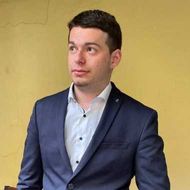- A
- A
- A
- АБB
- АБB
- АБB
- А
- А
- А
- А
- А
- Национальный исследовательский университет «Высшая школа экономики»
- Учебные подразделения
- Факультет социальных наук
- Департамент психологии
- Мероприятия
- Открытые лекции нейропсихолога Тимоти Шаллиса
-
Подразделения
- Кафедры
-
Центры и лаборатории
-
- Центр фундаментальной и консультативной персонологии
- Центр социокультурных исследований
- Научно-учебная лаборатория психологии социального неравенства
- Научно-учебная лаборатория политико-психологических исследований
- Лаборатория языковых, межкультурных и творческих компетенций
- Международная лаборатория позитивной психологии личности и мотивации
- Научно-учебная лаборатория когнитивных исследований
- Научно-учебная лаборатория когнитивной психологии пользователя цифровых интерфейсов
- Научно-учебная группа «Психология организационной коммуникации»
- Научно-учебная группа «Психология среды»
- Научно-учебная лаборатория психологии способностей
- Научно-учебная лаборатория нейробиологических основ когнитивного развития
-
- Партнеры
-
Образование
- Бакалавриат
- Магистратура
- Аспирантура
- Школьникам
- Дополнительное образование
-
Департамент
Тел.: 8 (495) 772-95-90 *15366
E-mail: dekpsy@hse.ru
Фактический адрес: 101000, г. Москва, Армянский пер. 4, корп. 2
Почтовый адрес: 101000, г. Москва, ул. Мясницкая, д. 20 (департамент психологии)
Психология – одна из наиболее бурно развивающихся в настоящее время наук о человеке, включающая, с одной стороны, такие фундаментальные исследовательские направления, как общая психология и психология личности, социальная и кросскультурная психология, когнитивная психология и психофизиология, экономическая психология и психология принятия решения, а с другой – такие практико-ориентированные направления, как психологическая диагностика, индивидуальное и семейное психологическое консультирование, психоанализ, организационная психология. Все эти направления развиваются в департаменте ведущими российскими психологами, для которых выбор психологии стал выбором не только профессии, но и судьбы.
 Воздействие институциональных реформ в Российской Федерации на устранение условий для коррупции
Воздействие институциональных реформ в Российской Федерации на устранение условий для коррупции
Артеменко Е. А., Бурский И. Г., Крылова Д. В. и др.
М.: Издательский дом НИУ ВШЭ, 2024.
Галяпина В. Н., Баранов О. О.
Социальная психология и общество. 2024. Т. 15. № 1. С. 92-111.
В кн.: Социальные и клинические рубежи современной психиатрии и наркологии: сборник трудов всероссийской научно-практической конференции (г. Краснодар, 14 марта 2024 г.) / под общей редакцией: С.Н. Алексеенко, А.Н. Редько, В.Г. Косенко [и др.].. Краснодар: 2024. С. 79-82.
Liutsko L., Malova Y., Vinokurova E. et al.
public health and health services. 20944. MDPI, 2023

Открытые лекции нейропсихолога Тимоти Шаллиса
Профессор Шаллис будет рассказывать о латерализации функций в префронтальной коре головного мозга человека, о когнитивном контроле и мозговых механизмах решения инсайтных задач. Ниже приводятся аннотации лекций.
Lecture 1: Neuropsychology and the lateralisation of prefrontal functions
The model I developed many years ago with Don Norman was essentially designed as an information-processing realisation of Alexander Luria’s approach to the operation of prefrontal cortex as the system for the programming, regulation and verification of activity. Within that framework, can one unpack the innards of a prefrontal Supervisory System? The lecture will examine the contrasting functions of the left and right lateral frontal cortices, and to a lesser extent those of the medial and anterior (Brodmann area 10) frontal cortices, from the perspective of the effects of lesions to frontal cortices. Imaging investigations of the hierarchical internal structure of action control in prefrontal cortex (Koechlin) and critical so-called multiple demand systems (Duncan) tend to suggest bilateral involvement. By contrast, a variety of neuropsychological investigations provide evidence of some lateralisation of function. There is an overall tendency for verbal -related processes to be more left lateralised visuospatial -related processes to be somewhat more right lateralised. In addition, I will argue that abstraction, problem solving in small tight well-formed problem spaces, and task or criterion setting are relatively left lateralised. By contrast, active monitoring and construction of a strategy in ill-formed problem spaces tend to be right lateralised. Examples will be drawn from both reaction time studies and problem-solving ones.
Lecture 2: Is there an underlying mechanistic account for the differential lateralisation of prefrontal neuropsychological processes?
A brief account will be given of the different types of models that have been used in cognitive neuropsychology. Two main types have been employed. Initially classical information-processing ones were used. However, they have tended to be replaced by standard connectionist or neural net ones. This will be illustrated from disorders in the domains of memory, reading and spelling. It will be argued, however, that connectionist models of particular domains need to be tweaked by the addition of specific types of components or properties so as to fulfil the functions explicitly assumed in the first type of model. The example will be given of competitive queueing models in the domains of short-term memory and spelling. Returning to the issue of the lateralisation of lateral frontal functions, discussed in lecture 1, what could be the “tweak” in that domain? It will be argued that the degree of lateral inhibition between alternative schemas or links may be a key difference between the two lateral prefrontal cortices. Functions that tend to be lateralised to the left are ones that require strong selection between alternatives, for instance in the creation of a hierarchical structure and so must be built on winner-take-all neural nets. By contrast, ones that tend to be lateralised to the right require relatively parallel processing across alternatives. An example of the first type will be given from investigations of dynamic aphasia arising from left inferior frontal lesions. An example of the second type will be given from an imaging study of difficult problem-solving that requires insight following multiple unsuccessful attempts.
- О ВЫШКЕ
- Цифры и факты
- Руководство и структура
- Преподаватели и сотрудники
- Корпуса и общежития
- Закупки
- Обращения граждан в НИУ ВШЭ
- Фонд целевого капитала
- Противодействие коррупции
- Сведения о доходах, расходах, об имуществе и обязательствах имущественного характера
- Сведения об образовательной организации
- Людям с ограниченными возможностями здоровья
- Единая платежная страница
- Работа в Вышке
- ОБРАЗОВАНИЕ
- Лицей
- Довузовская подготовка
- Олимпиады
- Прием в бакалавриат
- Вышка+
- Прием в магистратуру
- Аспирантура
- Дополнительное образование
- Центр развития карьеры
- Бизнес-инкубатор ВШЭ
-
http://www.minobrnauki.gov.ru/
Министерство науки и высшего образования РФ
-
https://edu.gov.ru/
Министерство просвещения РФ
-
http://www.edu.ru
Федеральный портал «Российское образование»
-
https://elearning.hse.ru/mooc
Массовые открытые онлайн-курсы
- © НИУ ВШЭ 1993–2024 Адреса и контакты Условия использования материалов Политика конфиденциальности Карта сайта
- Редактору


